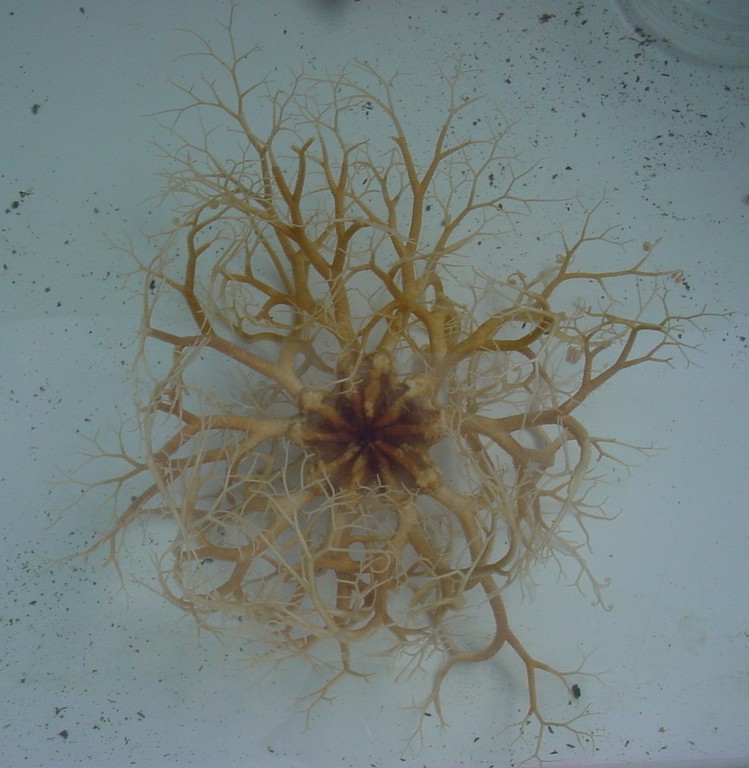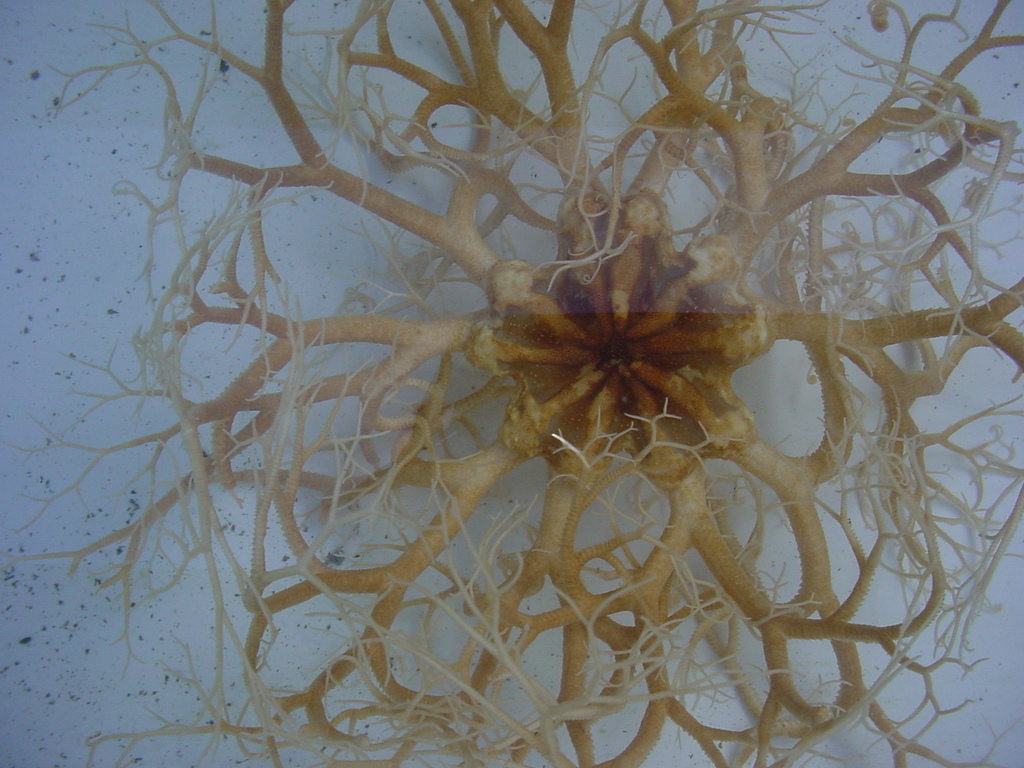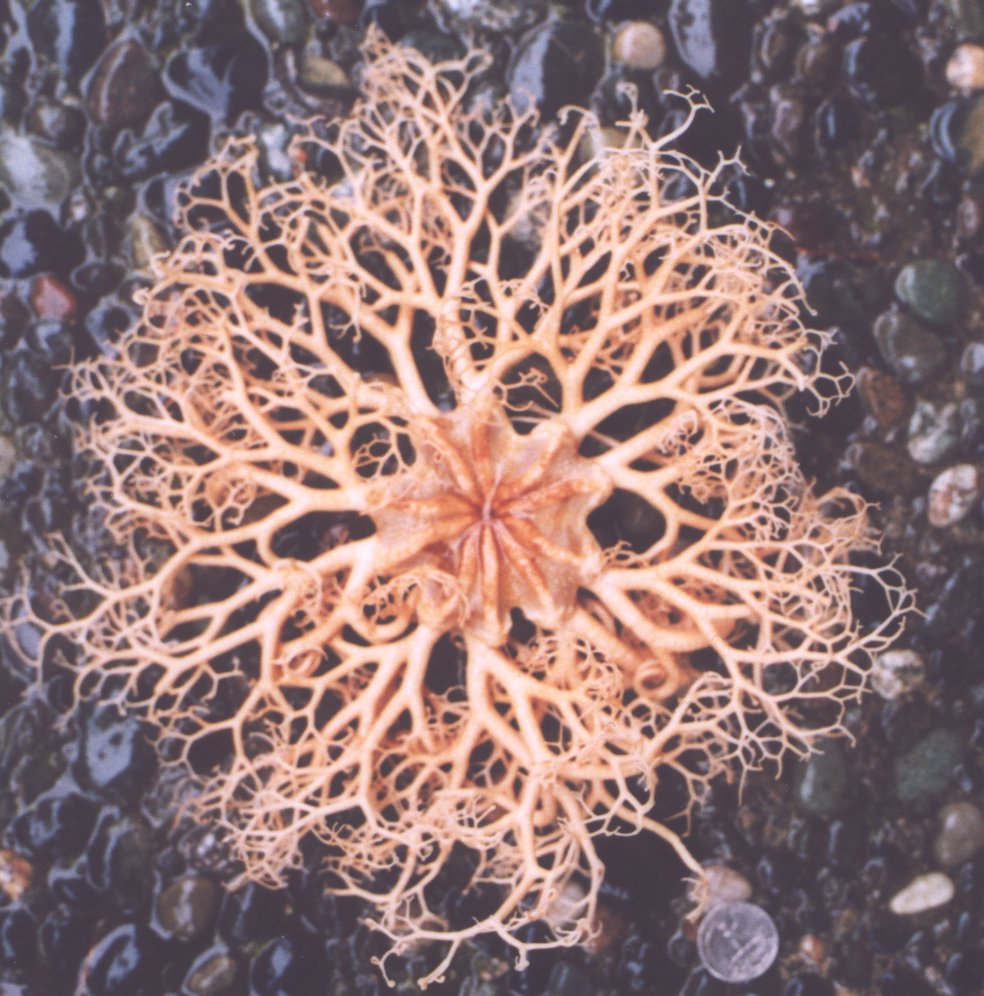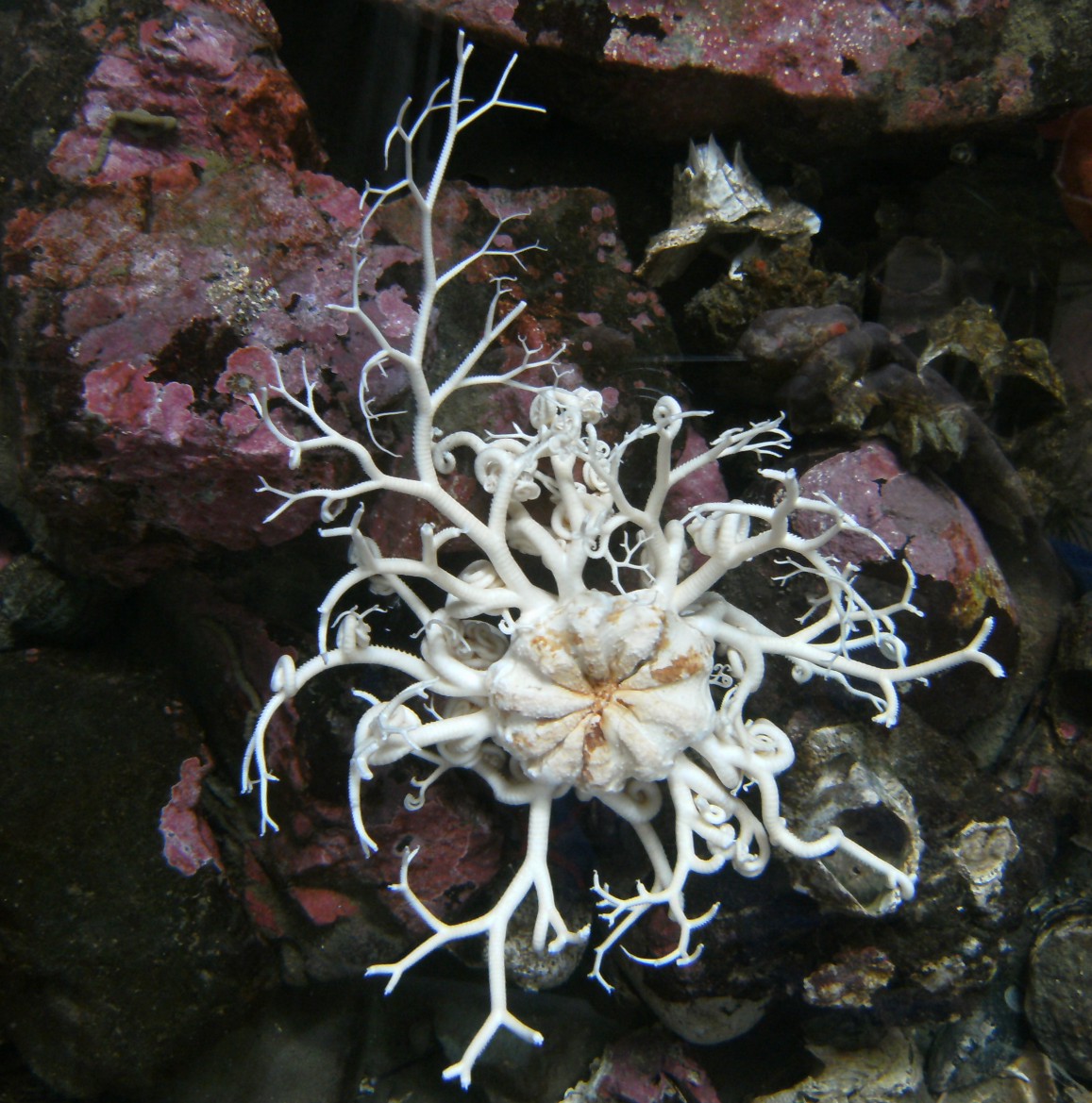Gorgonocephalus eucnemis Muller and Troschel, 1842Common name(s): Basket star |
|
| Synonyms: Gorgonocephalus caryi |  |
| Phylum Echinodermata
Class Ophiuroidea Order Phrynophiurida Suborder Eurylina Family Gorgonocephalidae |
|
| (Gorgonocephalus eucnemis found subtidally at Sares Head. Diameter approximately 30 cm) | |
| (Photo by: Dave Cowles August 2004) | |
How to Distinguish from Similar Species: There are no other basket stars in the Rosario area.
Geographical Range: Bering Sea to Laguna Beach, CA, East Siberian Sea, Chukchi Sea, Japan, North Atlantic down to Massachusetts, Faeroe Islands.
Depth Range: Subtidal, 10 m to nearly 2000 m, most commonly 15-150 m.
Habitat: Usually on rocky bottoms with moderate to strong currents. Sometimes on sandy or muddy bottoms which have projecting boulders, sea fans, or sea pens.
Biology/Natural History: One of the largest known ophiuroids, it can have a diameter of up to half a meter. It feeds on suspended particles by spreading its rays out like a fan, oriented mostly perpendicular to the current. Macroscopic zooplankton such as copepods, chaetognaths, and jellyfish are caught by microscopic hooks on the rays. The fine branchlet tips (see picture) then curl around the object and slowly move it toward the mouth (exact method is unclear). The prey of basket star species is said to range up to 3 cm (just over an inch) in size, and most basket stars capture prey mainly at night but may retain their prey until daytime to actually feed on them. Mucus may also help to immobilize prey. This species has also been reported to feed on the small benthic sea pen Stylatula elongata.
This species seems to have a strong co-occurrence with the
soft coral
Gersemia
rubiformis. In Puget Sound, Gorgonocephalus
juveniles
have been reported within the pharynges of Gersemia
polyps, where
they appear to develop and apparently feed. The young do not
leave
the Gersemia until their rays are long enough to
capture food.
| Return to: | |||
| Main Page | Alphabetic Index | Systematic Index | Glossary |
References:
Dichotomous Keys:
Kozloff
1987, 1996
Flora and Fairbanks 1966
General References:
Morris
et al. 1980
Gotshall
and Laurent, 1979
Lambert
and Austin, 2007
Scientific Articles:
General Notes and Observations: Locations, abundances, unusual behaviors: We most frequently observe this basket star on rocky bottoms, in areas of high current, and on an elevated place such as the top of a boulder or underwater hillock where it is fully exposed to the current. The species is highly active, writhing its rays in all directions like an animated bush. It almost always has the tips of the rays curled into tiny loops for catching prey.
This species does not usually do well in an aquarium, even with running seawater. If lifted from the water it tends to get a bubble in its oral cavity, which rises up under the skin and makes the animal buoyant. It then floats helplessly around the tank until the bubble is carefully released. Even if handled carefully it should not be kept in the tank for more than a few days because it quickly begins dropping rays, starting at the tips, and will soon die if not returned to the sea.
This species is common subtidally along Sares Head

A closer view of the animal's disk. Picture by Dave Cowles,
August
2004

This individual was photographed July 2001 by Dave Cowles.
Captured
off Sares Head.

This individual was photographed in the display tank at Friday Harbor Labs. Many of the arm tips are missing, as is common in individuals in captivity.
This basket star is much larger than most local brittle star species, as can be seen in this individual which covers the bottom of a 5-gallon bucket. Photo by Dave Cowles, July 2012
Basket stars frequently wave their arms around like a writhing bush. To see a video of this action in the basket star above, click here.
Authors and Editors of Page:
Dave Cowles (2004): Created original page
